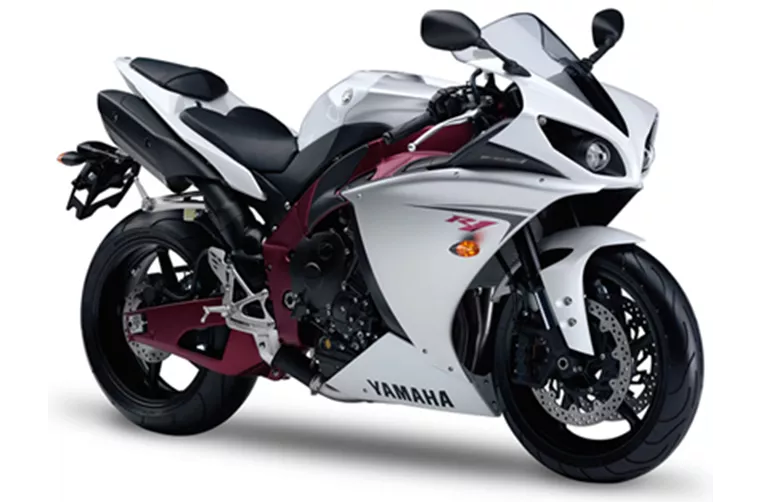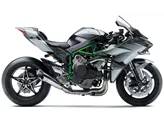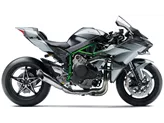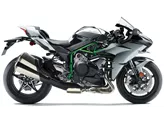Yamaha R1 2009 vs. Kawasaki Ninja H2R 2015

Yamaha R1 2009

Kawasaki Ninja H2R 2015
Vue d’ensemble - Yamaha R1 2009 vs Kawasaki Ninja H2R 2015
The Yamaha R1 model year 2009 and the Kawasaki Ninja H2 R model year 2015 are both powerful supersport motorcycles with impressive specifications. The Yamaha R1 2009 is equipped with an in-line engine, while the Kawasaki Ninja H2 R 2015 also features an in-line engine.
In terms of engine specifications, the Yamaha R1 2009 has a bore of 78 mm and a stroke of 52.2 mm, producing an engine power of 182 HP and a torque of 115.5 Nm. It has a compression ratio of 12.7 and is equipped with 4 cylinders and DOHC valves. On the other hand, the Kawasaki Ninja H2 R 2015 has a bore of 76 mm and a stroke of 55 mm, generating an engine power of 310 HP and a torque of 165 Nm. It has a compression ratio of 8.3 and also features 4 cylinders and DOHC valves. Both motorcycles have a displacement of 998 ccm.
In terms of suspension, both motorcycles have a telescopic fork for the front suspension. However, the Yamaha R1 2009 has a swing arm for the rear suspension, while the Kawasaki Ninja H2 R 2015 features a single swing arm.

Yamaha R1 2009
In terms of chassis, the Yamaha R1 2009 has an aluminum frame, specifically a Deltabox frame. On the other hand, the Kawasaki Ninja H2 R 2015 has a steel frame, specifically a tubular frame.
In terms of brakes, both motorcycles have double disk brakes for the front.
In terms of dimensions and weights, both motorcycles have a front tire diameter of 17 inches and a rear tire diameter of 17 inches. The Yamaha R1 2009 has a wheelbase of 1415 mm, a seat height of 835 mm, and a fuel tank capacity of 18 liters. On the other hand, the Kawasaki Ninja H2 R 2015 has a slightly longer wheelbase of 1450 mm, a slightly lower seat height of 830 mm, and a slightly smaller fuel tank capacity of 17 liters.

Kawasaki Ninja H2R 2015
Now, let's discuss the strengths and weaknesses of each motorcycle. The Yamaha R1 2009 is praised for its sophisticated sound, good feeling for power delivery, and easy handling. It also has a hydraulic spring preload and a high level of workmanship. However, it has been noted that the seating position is suboptimal and it can be somewhat difficult to corner over long distances.
On the other hand, the Kawasaki Ninja H2 R 2015 is praised for its quality of workmanship, power, torque, and traction. It is also noted for its surprisingly low maintenance requirements in the 300 hp league. The acceleration of the Kawasaki Ninja H2 R is described as being "as if from another star." The engine control is generally very good, and the motorcycle features high-quality details in all corners. Despite its over 300 hp, it still maintains the highest quality standards from series production. It also has superb paintwork, excellent brakes, and great stability in every situation. However, it has been noted that the engine response at the first few degrees of throttle can be a weakness. The Kawasaki Ninja H2 R also has understeer at high speeds and requires higher maintenance than normal bikes. Additionally, the sound of the Kawasaki Ninja H2 R is described as infernal, which can either be loved or cause problems on race tracks.
In conclusion, both the Yamaha R1 2009 and the Kawasaki Ninja H2 R 2015 are powerful supersport motorcycles with their own strengths and weaknesses. The Yamaha R1 2009 offers a sophisticated sound, good power delivery, and easy handling, while the Kawasaki Ninja H2 R 2015 boasts quality workmanship, exceptional power and torque, and surprisingly low maintenance requirements. Ultimately, the choice between the two will depend on the rider's preferences and priorities.
Caractéristiques techniques Yamaha R1 2009 par rapport à Kawasaki Ninja H2R 2015
Avantages et inconvénients en comparaison
Avantages et inconvénients en comparaison
Yamaha R1 2009
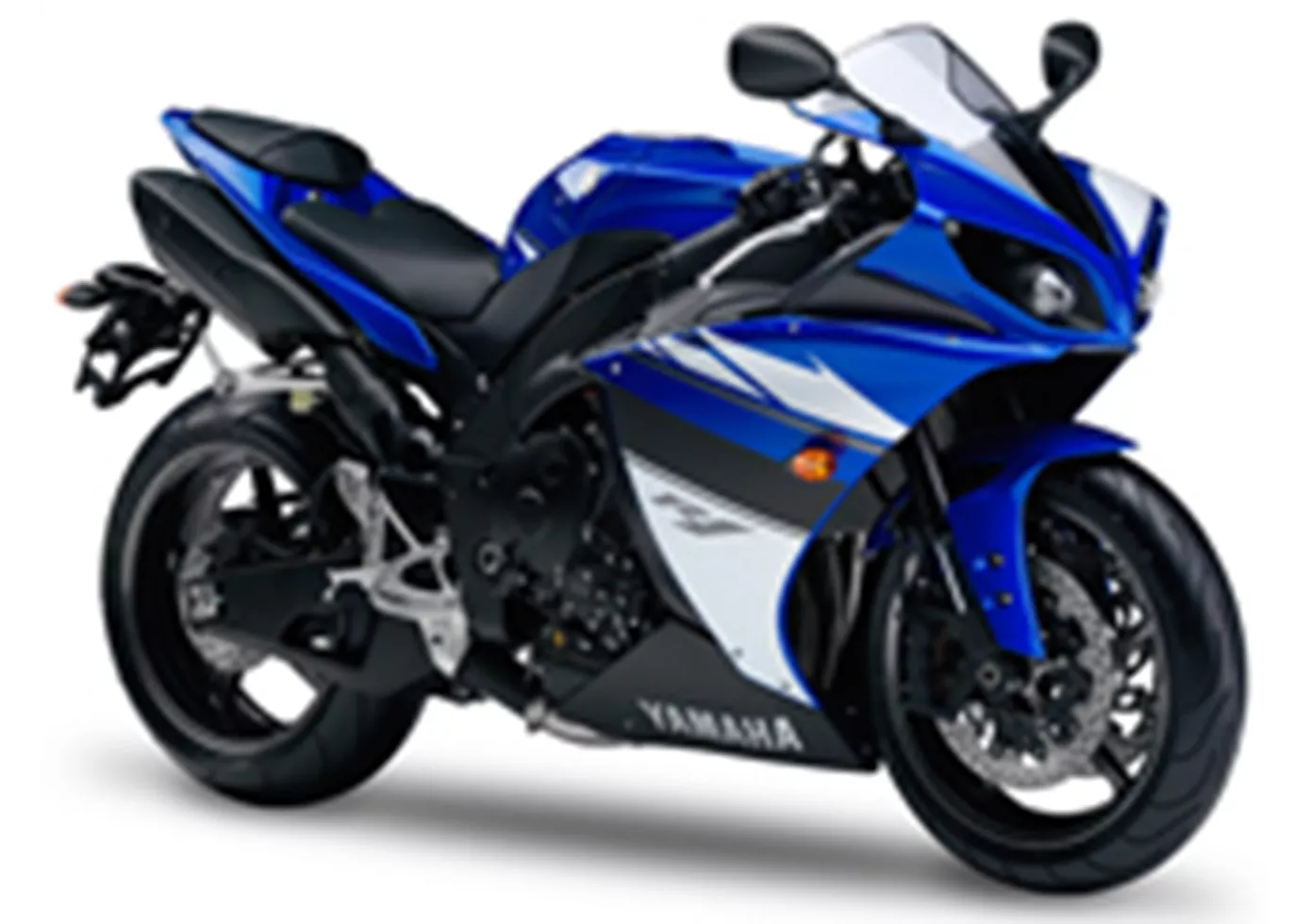
Bien entendu, le nouveau moteur R1 a également subi tous les tests de résistance rigoureux de Yamaha et est livré avec les mêmes garanties que les autres motos Yamaha. En effet, jusqu'à présent, ce sont précisément les thèmes de la durabilité et de la fiabilité qui empêchaient la production en série d'un tel moteur.
Kawasaki Ninja H2R 2015

L'équipe Kawasaki avait une vision. Construire une moto qui suscite l'excitation et qui entre dans de toutes nouvelles dimensions en termes de performances et de technologie. Cette vision est réussie. La machine de 326 ch peut être pilotée par des pilotes expérimentés sans danger de mort imminent. L'intensité de l'accélération est indescriptible. Mais l'aspect général parfait de la moto, avec ses innombrables détails de qualité, est également enthousiasmant. Par rapport aux motos normales, la H2 R se permet des faiblesses au niveau de la réponse à l'accélération et de la précision de la ligne à haute vitesse. Dans l'ensemble, la H2 R est pour le pilote d'essai la moto la plus fascinante de tous les temps et peut être recommandée en toute bonne conscience aux accros de l'essence. La H2 R est disponible au prix d'un break premium bien équipé de fabrication allemande - mais avec "un peu" plus d'adrénaline.
Comparaison des prix Prix moyen du marché Yamaha R1 vs Kawasaki Ninja H2R
There are a few key differences between a Yamaha R1 2009 and a Kawasaki Ninja H2 R 2015. It takes less time to sell a Yamaha R1 with 45 days compared to 2,298 days for a Kawasaki Ninja H2 R. Since model year 2005 1000PS.de editors have written 80 reviews for the Yamaha R1 and 13 reviews for the Kawasaki Ninja H2 R since model year 2015. The first review for the Yamaha R1 was published on 4/28/2003 and now has more than 3,900 views. This compares to more than 413,000 views for the first review on Kawasaki Ninja H2 R published on 11/4/2014.
